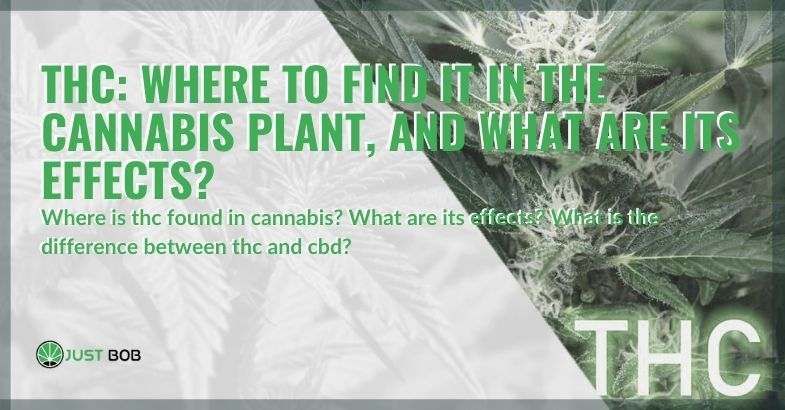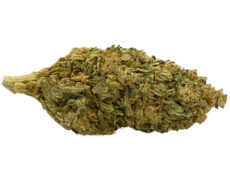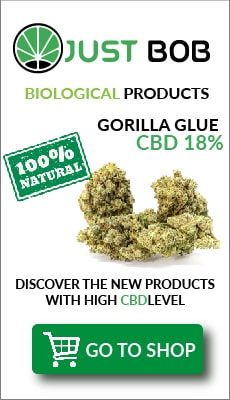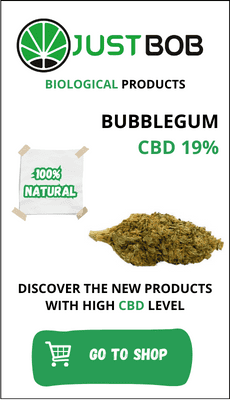Modified on: 19/04/2024
WHERE IS THC FOUND IN CANNABIS? WHAT ARE ITS EFFECTS? WHAT IS THE DIFFERENCE BETWEEN THC AND CBD?
THC (tetrahydrocannabinol) is one of the main cannabinoids in marijuana, known for the “high” sensation it causes. In reality, the cannabis plant contains more than 400 active ingredients. In addition to THC, we find CBD, CBN and many other ingredients.
But where is THC found in the cannabis plant? What about the other cannabinoids?
-
 SMALL & BIG
SMALL & BIGBUBBLEGUM
Indoor | CBD – CBDA < 22%
Starting from:EASTER SALE -10%
1,25CHF1,10CHF/gGrams3 5 10 20 50 100 -


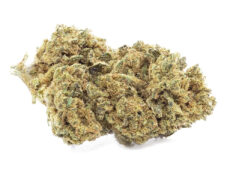
DO SI DOS
Starting from: 2,00CHF/gIndoor | CBD – CBDA < 19%
Grams3 5 10 20 50 100 -


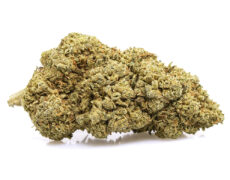
ROYAL GG#4
Starting from: 2,30CHF/gIndoor | CBD – CBDA < 40%
Grams3 5 10 20 50 100 -


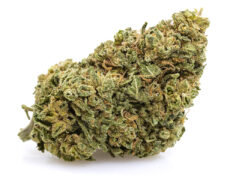
GORILLA GLUE
Starting from: 2,90CHF/gIndoor | CBD – CBDA < 20%
Grams3 5 10 20 50 100
Today we want to answer this question by focusing, subsequently, on the effects of THC and the difference between this compound and CBD. Let’s get started right away!
What is THC and where is it found in cannabis?
Tetrahydrocannabinol, also known as THC, is the psychoactive compound of cannabis. It means that its intake can alter our psyche, the sensations we experience and our behaviour.
Its molecular formula (C₂₁H₃₀O₂) is highly similar to that of another famous cannabinoid, CBD (cannabidiol). However, CBD acts as an antagonist to THC and has no psychoactive effect.
All the marijuana cannabinoids are found in every single part of the plant epidermis, the tissue that covers the plant’s aerial parts: stem, branches, leaves and flowers.
Specifically, it is glands called trichomes that produce a peculiar resin rich in cannabinoids, aromatic molecules (terpenes) and flavonoids.
Trichomes grow, precisely, on the epidermis of cannabis, focusing mainly on the flowers of female plants. Not surprisingly, the marijuana curls (post drying) are the most consumed parts of the plant.
THC is present in high quantities in the flowers of illegal cannabis in Switzerland, while it is present in minimal doses (less than 1%) in legal CBD weed. Conversely, the latter contains high levels of CBD, the beneficial cannabinoid with non-psychotropic effects.
Read also: THC effects in the long term: here’s what can happen to chronic smokers
Effects of THC and CBD compared
As we anticipated, THC and CBD are two cannabis compounds with a very similar molecular formula but with significantly different effects. Both bind to the cannabinoid receptors of our body, but the first alters our psyche; the other does not.
More precisely, THC mimics anandamide’s structure (endocannabinoid naturally produced in our brain) by literally attaching itself to neurons and altering neuronal communication mechanisms. Not surprisingly, its intake determines the following effects:
- memory impairment (positive and sometimes negative)
- pleasure and euphoria
- difficulty with movement and coordination
- increased thought flow, which often causes severe anxiety
- alteration of sensory and space-time perception
Furthermore, this particular cannabinoid causes the hyper-production of dopamine, the pleasure hormone: if the process is repeated, it leads to addiction and the possible dependence of its effects.
The CBD, however, binds to the cannabinoid receptors CB1 and CB2 in a very different way compared to THC, causing the following beneficial effects and non-psychotropic:
- antioxidant
- relaxing
- anti-inflammatory
- immunomodulator and immunosuppressive (ideal for controlling auto-immune pathologies)
- antiemetic (anti-nausea and anti-vomiting)
- painkiller
- hypotensive
- antispasmodic
- hypotensive
- antipsychotic
That’s not all: CBD oil intake also has antiepileptic effects, favored by several mechanisms, including agonist and antagonist effects on ion channels.
If the repeated and frequent intake of THC is addictive, the intake of CBD has no side effects (although it is not recommended in pregnancy and people suffering from hypotension).
But did you know that cannabinoids are also present in other plants besides Cannabis Sativa L.?
Plants other than cannabis that contain phytocannabinoids (but not THC and CBD)
The medical-scientific world’s discoveries surprise us more and more, especially since research has begun to be interested in the interaction of cannabinoids with our brain.
Thus, scholars have discovered that the active ingredients of marijuana are THC and CBD (but there are over 400 of them). That CBD cannabis and high-THC weed are not the only plants to contain therapeutic cannabinoids.
Numerous other plants contain substances capable of interacting with our endocannabinoid system! Here are the best known:
- Cocoa contains theobromine, phenylethylamine, tryptophan and anandamide. The latter is considered to be the equivalent of THC naturally produced by our body.
- Echinacea is an immunostimulant that interacts with our endocannabinoid system through cannabimimetic, which mimic the properties of cannabinoids.
- Black pepper, which contains both the beta-caryophyllene terpene (present in numerous cannabis varieties such as OG Kush and Girl Scout Cookies) and an alkaloid capable of interacting with the CB2 receptor, with anti-inflammatory effects.
- Helichrysum is used as a mood stabilizer thanks to the high quantities of cannabigerol (CBG). You may not know yet, but CBG is a phytocannabinoid found in cannabis!
Knowing that other plants interact positively with our brain is, in our opinion, an exceptional discovery.
Read also: Marijuana bud: what is it? How to recognise it and how to know its quality?
In conclusion
Now you know where THC is found in cannabis, and what the differences between CBD and THC are, and which plants contain cannabinoids besides the hemp plant.
As you have read, CBD buds, also called legal cannabis, contains meagre amounts of THC and high percentages of CBD, a beneficial and non-psychotropic active ingredient.
Do you want to buy the best cannabis strains online? We are waiting for you on Justbob, our CBD online shop!


